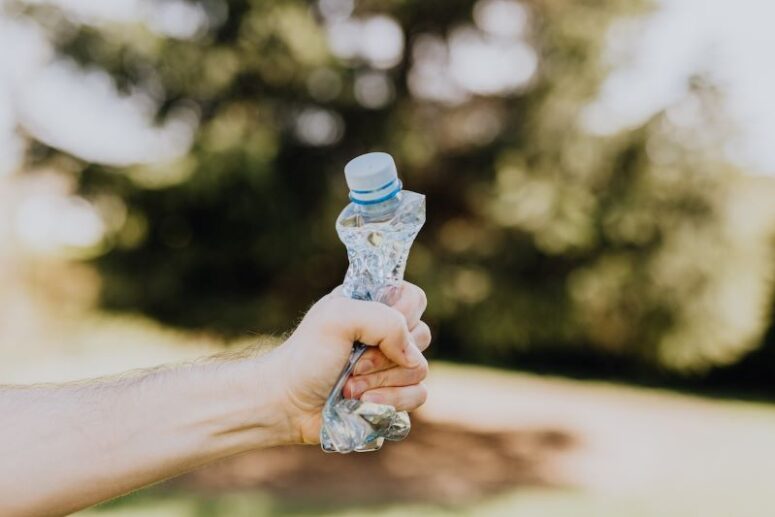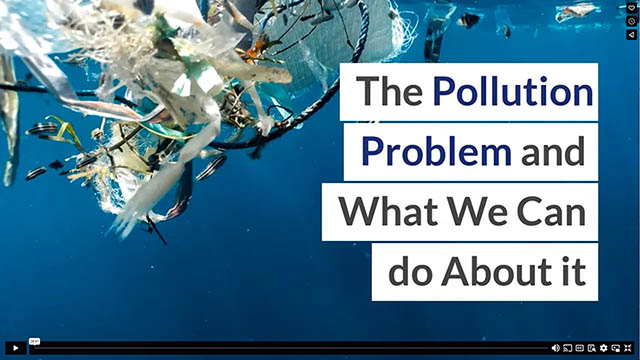
The Pollution Problem and What We Can do About it
According to the World Bank, humans generate over two billion tons of waste every year. By 2050, that is expected to be closer to four billion tons.
Where do all those billions of tons end up? Much of it is dumped in landfills. Some of it is recycled. An unfortunate amount of it lands in natural ecosystems, oceans, and other waterways, where it takes hundreds or even thousands of years to decompose.
For a long time, we didn’t worry about filling up the sky with waste. Now we know that human-generated CO2 and other compounds are having an irreversible effect on the planet. Climate change, in its essence, is a result of cars, airplanes, and factories pumping waste into the air. Considering all of this, it’s clear that waste is causing pollution everywhere, affecting everything from the air we breathe to the water we drink.
So what are some of the different types of pollution caused by waste, and what can we do about it?
1. Beach Pollution
Beach pollution might seem niche, but for many, it’s all too familiar. This type of pollution can come from a variety of sources, including litter, wind storms, and oil spills. Beach pollution harms marine ecosystems and can also impact local tourism and economies.
How would you feel if you traveled across the world on vacation to the idyllic beaches of a tropical island only to find them covered with garbage? Or worse, dead marine life due to the polluted water?
What can you do about polluted beaches?
We can all help reduce beach pollution by participating in beach trash pickup efforts. If you don’t live in the vicinity of a beach, choosing eco-friendly products and supporting organizations that work to reduce beach pollution can support efforts to protect these important coastal areas.
It’s wonderful to live in such a connected world where we can travel and keep in touch so easily. What we may not realize is how interconnected the health of our ecosystems are. The litter you drop on the road in the USA could easily end up damaging the beach ecosystems in Fiji.
2. Plastic Pollution
If different kinds of pollution were chess pieces, plastic pollution would be the queen. Plastic is the most pervasive type of waste. Plastic products such as straws, bottles, and bags take hundreds of years to decompose, and they often end up in the ocean, where they harm marine life and disrupt ecosystems.
According to the Ellen MacArthur Foundation, “There will be more waste plastic in the sea than fish by 2050 unless the industry cleans up its act.”
What can you do about plastic pollution?
One way consumers can help reduce plastic waste is by using reusable bags and containers instead of single-use plastic products. These little differences, like bringing your own shopping bags to the store and using a refillable water bottle instead of buying bottled water, add up to a measurable change if enough people do them.
3. Air Pollution
Air pollution comes from a variety of sources, including transportation, industry, and agriculture. One of the problems with air pollution is that it doesn’t matter who generates it. Since air mixes quickly, we all suffer from the negative effects.
When waste is burned or improperly disposed of, it can release harmful pollutants into the air, contributing to respiratory illness, heart disease, asthma, and other health issues.
What can you do about air pollution?
Consumers can help reduce air pollution by using public transportation, biking or walking instead of driving, and properly disposing of waste in designated recycling or compost bins.
Choosing to purchase products from companies committed to sustainability and low-carbon production can help reduce the overall impact of waste on air quality. Finally, maybe the best thing to do is to advocate for cleaning up air pollution to your local government representatives.
4. Water Pollution
Water pollution, like air and land pollution, doesn’t only come from people directly putting garbage into rivers. It is caused by a variety of factors, including agricultural runoff, industrial waste, and sewage. When these pollutants contaminate drinking water, it harms human health.
We often think of water pollution as a big deal in developing countries without proper water filtration systems. While this is a huge issue for these countries, developed nations still have a problem. Polluted water wastes millions of dollars, threatens people’s livelihoods, and becomes more pressing as agricultural practices intensify, and aquifers dry out.
What can you do about water pollution?
You can help keep waterways and drinking water pollution free by choosing eco-friendly cleaning products and reducing consumption of single-use plastics (anyone else sensing a theme here?). Making your own composting toilet has become popular in recent years since it isn’t too difficult and produces excellent fertile soil.
Final note:
According to the Lancet Commission, exposure to polluted environments is responsible for an estimated nine million premature deaths each year. That’s more people than all those who die from smoking, hunger, and war combined. It’s time to stop treating the Earth like a bottomless disposal container so that it remains a place we can live happily long into the future.
Infographic
The World Bank estimates that each year, humans produce approximately two billion tons of garbage. That figure is anticipated to be closer to four billion tons by 2050. Where do those billions of tons ultimately go? Take a look at this infographic to learn the four types of pollution and how we can solve them.


